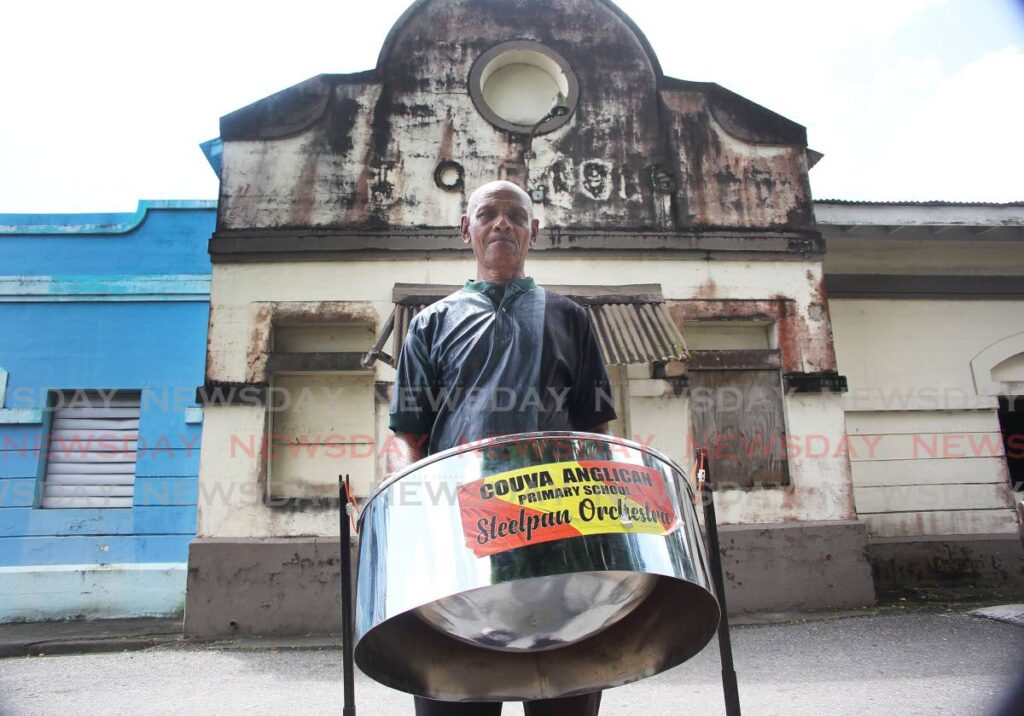Corporation chairman's vision for Couva – Railway Strip Heritage Park

Right now, Railway Road in the heart of Couva is a dormant area with a dilapidated building — the remnant of a train stop — an overgrown parcel of land, a pan yard, and government buildings, including the Couva/Tabaquite/Talparo Regional Corporation (CTTRC) administrative building.
However, if all goes as planned, the area could soon transform into a stunning heritage park, reviving the formerly bustling district.
That is the vision of CTTRC’s chairman Henry Awong – to create the Railway Strip Heritage Park.
Last month, the corporation invited tenders for the first phase of the design and construction of the proposed project. To date, no bidder has been selected. A $500,000 budget was allocated for the project’s initial phase. But the sole bidder’s tender was five times more than the budget.
"We are reviewing the project to determine the next step. We hope the Government would see the benefit of it," Awong told Newsday.
The proposed strip runs from the Inshan Ali promenade to the corporation’s main building.
The chairman recalled that during the height of the pandemic and from inside his office, he heard members of the NGC Couva Joylanders playing.
The players were in front of the pan complex along Railway Road.
Liking the sounds of the music, he opened his windows and shared a Facebook live video.
"Many people commented on it. They commented the music sounded so sweet. Then, the thought came to me that if we develop this strip, put some park benches, some solar-powered lamps, some greenery like ornamental trees, we could create an evening/nightlife atmosphere right there," Awong said.
Next to the corporation is the URP office, and both have car parks in front.
Awong envisioned using the car park spaces on Fridays and Saturdays. Vendors could use the area to sell while the panside plays music.
The project, once it goes into fruition, would be two-fold, he said.
It creates local economic development and provides nightlife.
"Couva does not really have any kind of nightlife. It is a safe space too. The municipal police station is on Railway Road, and the other road is the Couva police station next to the promenade. It would be a secure environment," Awong said.
"In the promenade, we built public conveniences about two or three years ago. So this project is not for recreational purposes alone."
Considering the train stop was once on the street, he hoped to get a carriage or a similar replica to represent the days when people used to flock there to ride the train.
Awong said plans are afoot to rebrand Couva as the sporting capital of the Caribbean.
He felt proud that Couva has many sporting facilities – the National Aquatic Centre, the National Cycling Centre, the Ato Boldon Stadium, and the TT Cricket Board main building, among other buildings.
He added, "We have the women’s cricket ground. Not far from there, we have the Sevilla Golf Course."
The chairman recalled that in 2017, the Central American and Caribbean Swimming Championships held an event in Couva.
"Over 3,000 visitors from abroad came to Couva every day for the events. But they were not staying in Couva. They were staying in Port of Spain and its environs. We want that when people come to events, they can have nightlife. They could buy items, and that helps with local economic development."
The marking TGR 1916 is engraved on the concrete building of what used to be the train stop.
At the front of the panyard, across the street was a sign about the cistern of the Trinidad Government Railway goods shed.
It read, "This cistern or water tank was constructed in the late nineteenth, early twentieth century. Tanks like these were usually found wherever government buildings and residences were located in TT. This cistern was built to provide water to the Trinidad Government Goods Shed, Couva, which was situated where the NGC Couva Joylanders Pan Complex now stands."
David "Pin" Sylvester, the band’s co-founder, was thrilled with the proposition and happy with how the music affected listeners. He co-founded the band with Herman Scope.
He recalled that the band first entered the National Panorama competition in 1972 when it was housed in another area in Couva. Sylvester, the father of four and grandfather of six, turns 77 on September 22.
Sylvester said members took part in Panorama competitions from 1972-1990.
In 1975, the band relocated to its current location.
For a period – 1990-1997, financial woes caused the band to become dormant.
The majority of players migrated in 1993-1994, leaving the band with only three people — the two co-founders and another player named Roy Francis.
Their passion for the music did not waver. They successfully encouraged their relatives as well as youths in the area to participate.
"My joy is teaching now, passing on my talents to young children. It is community service, and I offer lessons for free," Sylvester said.
He tutors at Couva AC primary school and Holy Faith Convent.
Sylvester started playing the pan at 14, under the guidance of a pannist, Winston Victory.
The first tune he learned was the hit song of the day, Sad Movies.
In 2020, under the leadership of manager Richard Gill and arranger Stefon West, the NGC Couva Joylanders earned their first National Panorama title in the medium conventional band category. They performed Winston "De Fosto" Scarborough’s 1993 song, It’s My Turn.
West once played under the leadership of the band’s original arranger Mickey Fredericks.


Comments
"Corporation chairman’s vision for Couva – Railway Strip Heritage Park"